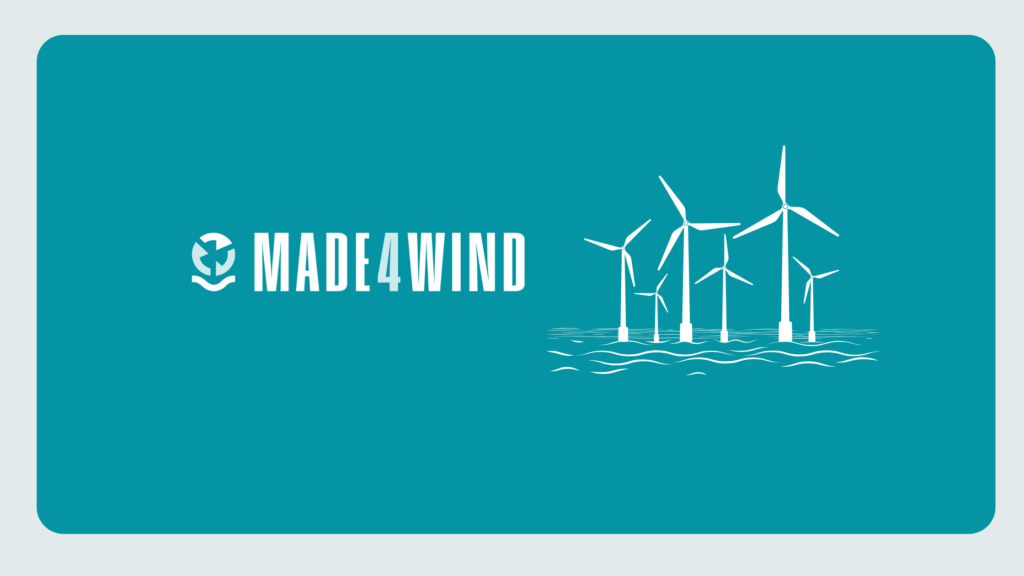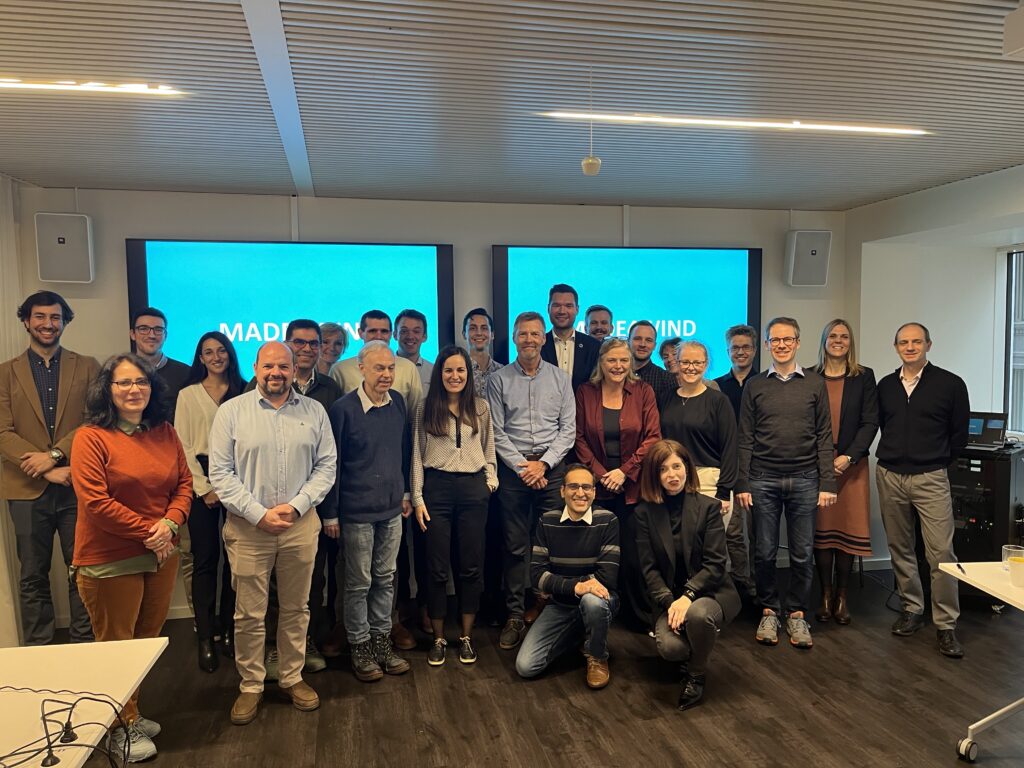The MADE4WIND project is a groundbreaking initiative aimed at overcoming the most pressing technological challenges in the deployment of large-scale floating wind turbines (FWTs). By developing innovative components and manufacturing techniques, MADE4WIND seeks to enhance the reliability, sustainability, and cost-effectiveness of offshore wind energy.
Circular and Efficient Design and Manufacturing of Large-Scale Lightweight Wind Turbine Blades
One of the primary objectives of MADE4WIND is to address the lightweight and smart design of wind turbine (WT) blades. This involves:
- Blade Toughening Material Solutions: Improving the structural integrity at critical design details to enable lower blade mass.
- Composite Preform Solutions: Reducing blade production costs and improving factory throughput through modular manufacturing, while reducing manufacturing defects and improving the reliability of large WT blades.
- Composite Recycling Solutions: Developing and testing innovative composite recycling solutions for WT blades, enabling blade circularity with minimized waste and cost at decommissioning, and reducing the need for composite raw materials.
Advanced and Cost-Effective Materials and Optimized Designs for TLP Type Floating Support Structure
MADE4WIND is focused on developing and testing innovative materials and designs for TLP (Tension Leg Platform) type floating support structures. Key objectives include:
- Circular Concrete Materials Solutions: Creating concrete materials for the floater and anchor that reduce environmental impacts with a lower CO2 footprint, ensure structural integrity in a marine environment, and improve material durability through corrosion and biofouling resistance.
- Lightweight Floater Concept: Designing a floater that is easy to cast and transport, with reduced production and installation costs.
- Optimized Gravity Anchor: Reducing the structural and weight requirements of the gravity anchor to enable smaller dimensions.
- Aluminum Rebar: Exploring the use of aluminum rebar as a substitute for steel to increase floater lifetime by reducing corrosion risk, potentially reducing the thickness of the concrete shell, and allowing the use of new cement mixes with reduced CO2 footprint.
- Optimized Mooring Systems: Replacing heavy mooring chains with lighter synthetic tendons to decrease their weight.
- Numerical Methodology for Reinforced Concrete: Implementing a numerical methodology for modeling reinforced concrete in structural analyses to enable optimized TLP floating component design.

Innovative Compact, Lightweight, and More Reliable Drivetrain Design
MADE4WIND aims to develop a compact, optimized, and lightweight drivetrain with high power density for large floating offshore wind turbines. Objectives include:
- Compact Drivetrain: Developing the most cost-effective option for large floating offshore wind turbines, minimizing the use of rare earth materials.
- Improved Generator Technology: Evaluating technological parameters to obtain the optimum ratio of power to speed.
- Reliable Converter Design: Creating an innovative converter design based on advanced semiconductor technologies to optimize mechanical loads, power losses, cost, and LCoE reduction.
- Electrical Drivetrain Reliability: Upgrading reliability by designing a new main power module, reducing the total number of elements in the electrical system, developing new switching and parallelization strategies, advanced control algorithms, and introducing a novel monitoring system.
Improved Modelling Framework for Wind Turbine and Wind Farms
MADE4WIND is developing an improved modeling framework to optimize the design of future large-scale floating wind turbines and wind farms. Objectives include:
- Improved Cost Model: Developing a cost model to account for components’ materials, design, and development costs, enabling faster evaluation of various design strategies.
- Virtual Floating 15MW WT: Creating a virtual model of a 15MW floating wind turbine to establish the impact of improved MADE4WIND components on WT cost and WF LCoE.
- Simulation Tools: Utilizing state-of-the-art simulation tools to improve understanding of offshore FWTs and WFs related physical phenomena, optimizing design according to technical, economic, and environmental demands.
Advanced Testing and Validation Framework for Wind Turbine Components
MADE4WIND aims to validate critical components in relevant conditions to achieve high durability, decreased maintenance, and reduced failure rates. Objectives include:
- Component Validation: Ensuring high techno-economic feasibility and high availability of system operation offshore to achieve optimized LCoE.
- Numerical Model Validation: Validating numerical models through advanced lab testing to achieve high accuracy in the simulation framework, allowing safe reduction in over-engineering of device specifications.
Environmental Impact Minimization
MADE4WIND is committed to minimizing environmental impacts through various strategies:
- Biodiversity Assessments: Conducting biodiversity assessments and developing protection strategies to minimize impacts on protected species and habitats.
- Life Cycle Assessment (LCA): Ensuring targeted GHG savings are achieved throughout the supply chain and no significant harm is done to marine ecosystems or other planetary boundaries.
- Mission Healthy Oceans: Contributing to the objectives of the Mission Healthy Oceans by promoting circular, low-carbon, multi-purpose use of marine space.
High Economic Impact
MADE4WIND aims to achieve high economic impact through various strategies:
- Reduced Wind Turbine Cost: Achieving cost reductions through smart blade manufacturing, lighter and efficient drivetrains, and optimized support structure components.
- Reduced LCoE: Targeting a Levelized Cost of Energy (LCoE) of around 75 €/MWh at a 7% discount rate and 55 €/MWh at a 3% discount rate, making offshore floating wind farms competitive with other renewable energy sources.
- Reduced Investment Risk: Utilizing monitoring and predictive computational tools to ensure structural integrity, reduce failure, and increase installability and maintainability.
Societal Benefits Maximization
MADE4WIND aims to maximize societal benefits through various strategies:
- Social Sustainability Assessment: Conducting social LCA to identify critical risks early on.
- Raw Materials Assessment: Reducing EU supply chain dependencies and preserving resources for future generations.
- Deployment Map: Creating a potential deployment map showing competition, ecological, and technological constraints.
- GIS Maps: Developing GIS maps consisting of noise and biodiversity for several EU offshore sites.
- Stakeholder Identification: Identifying stakeholders involved in key offshore wind energy initiatives and considering their needs in designing compatible solutions.
- Job Creation: Creating new businesses and job opportunities for on-site shore assembly, transport, installation, and O&M.
High Exploitability
MADE4WIND aims to achieve market uptake by establishing a global plan for dissemination and exploitation of results. This includes:
- Dissemination and Exploitation: Disseminating results through journals, events, and clustering activities, interacting with end users and wind stakeholders.
- Business Plans: Developing business plans that address offshore wind energy market complexity, regulatory framework, market uptake barriers, social perception of technological results, and fostering massive replication into the offshore wind sector.


